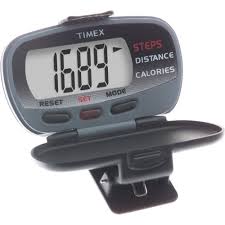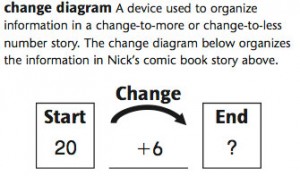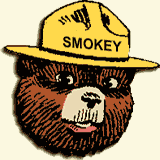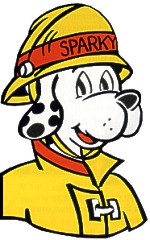Posted by kavery508 | Posted in Uncategorized | Posted on October 27, 2013
Thanks, Everyone, for your help with the Get Fit Adventure! Our class was the first to return all pedometers and recording sheets on Friday!
 Now, polish those boots! On Halloween we’ll be celebrating Floral style, with our own Fall Festival. The kids will be treated to Fall and Halloween centers in the morning, and we’ll be kicking up our heels at our school Hoedown in the gym that afternoon–what a blast! Kids (and grownups) are encouraged to wear Western gear that day (anything plaid and denim, cowboy/cowgirl/farm clothing). Please no weapons (just a general good rule, no?). We can’t share any food as a classroom, but if you want to pack some kind of Fall/Halloween treat for your child’s personal snack, that will just add to the fun! We do NOT have any food allergy restrictions in our classroom this year–nuts, eggs, flour, berries, wheat, etc., are OK to send in as a personal snack.
Now, polish those boots! On Halloween we’ll be celebrating Floral style, with our own Fall Festival. The kids will be treated to Fall and Halloween centers in the morning, and we’ll be kicking up our heels at our school Hoedown in the gym that afternoon–what a blast! Kids (and grownups) are encouraged to wear Western gear that day (anything plaid and denim, cowboy/cowgirl/farm clothing). Please no weapons (just a general good rule, no?). We can’t share any food as a classroom, but if you want to pack some kind of Fall/Halloween treat for your child’s personal snack, that will just add to the fun! We do NOT have any food allergy restrictions in our classroom this year–nuts, eggs, flour, berries, wheat, etc., are OK to send in as a personal snack.
 Speaking of fun, we’ve been ending the day with fun and learning videos. This one teaches classical music–the theme of Camille Saint-Saens’ “Danse Macabre”: http://www.youtube.com/watch?v=5jYnmds8QDE. Another of our favorites for learning coins is “Penny You’re the One”:http://www.youtube.com/watch?v=0h946YYlH1M
Speaking of fun, we’ve been ending the day with fun and learning videos. This one teaches classical music–the theme of Camille Saint-Saens’ “Danse Macabre”: http://www.youtube.com/watch?v=5jYnmds8QDE. Another of our favorites for learning coins is “Penny You’re the One”:http://www.youtube.com/watch?v=0h946YYlH1M
![]() Math Facts Homework begins this week. On Monday I’ll be sending home a letter outlining how it works. Attached to that will be a note with your child’s password for Xtramath.org, along with general procedures for getting online. Xtramath is an online math facts practice site that gives timed tests to students. This free program keeps track of student progress for kids, parents, and teachers to view any time. Please try it out; it has proved a very helpful and motivating strategy for kids learning math facts! http://xtramath.org. This Friday will be the first “official” math facts quiz. Quizzes will be corrected, scored, and returned every Monday. Students stay on the same level until it has been mastered.
Math Facts Homework begins this week. On Monday I’ll be sending home a letter outlining how it works. Attached to that will be a note with your child’s password for Xtramath.org, along with general procedures for getting online. Xtramath is an online math facts practice site that gives timed tests to students. This free program keeps track of student progress for kids, parents, and teachers to view any time. Please try it out; it has proved a very helpful and motivating strategy for kids learning math facts! http://xtramath.org. This Friday will be the first “official” math facts quiz. Quizzes will be corrected, scored, and returned every Monday. Students stay on the same level until it has been mastered.
![]() The Common Core Standards rightly raises the importance of poetry in reading and writing. We’ve begun learning poetry terms (stanza, rhyme, rhythm, imagery) and applying them by analyzing poems. This week we will learn about metaphors, which are a powerful tool for creating understanding and painting pictures with words. Consider this poem by Langston Hughes called “Autumn Thought”:
The Common Core Standards rightly raises the importance of poetry in reading and writing. We’ve begun learning poetry terms (stanza, rhyme, rhythm, imagery) and applying them by analyzing poems. This week we will learn about metaphors, which are a powerful tool for creating understanding and painting pictures with words. Consider this poem by Langston Hughes called “Autumn Thought”:
Flowers are happy in summer.
In autumn they die and are blown away.
Dry and withered,
Their petals dance on the wind
Like little brown butterflies.
What images come to mind when reading the poem? How can flowers seem happy? What does it mean to “dance on the wind?” By using the butterfly metaphor at the end, how does the poet show how he feels at seeing the petals?
We have created “Treasure Folders” (I tell the kids each poem is a jewel–how’s that for a metaphor?) in which kids will keep copies of several poems, and others they can choose to take home. In addition, we are copying parts of poems down for handwriting practice. Copying poetry has the added benefit of making it seem like the poems belong to us–which they do!








